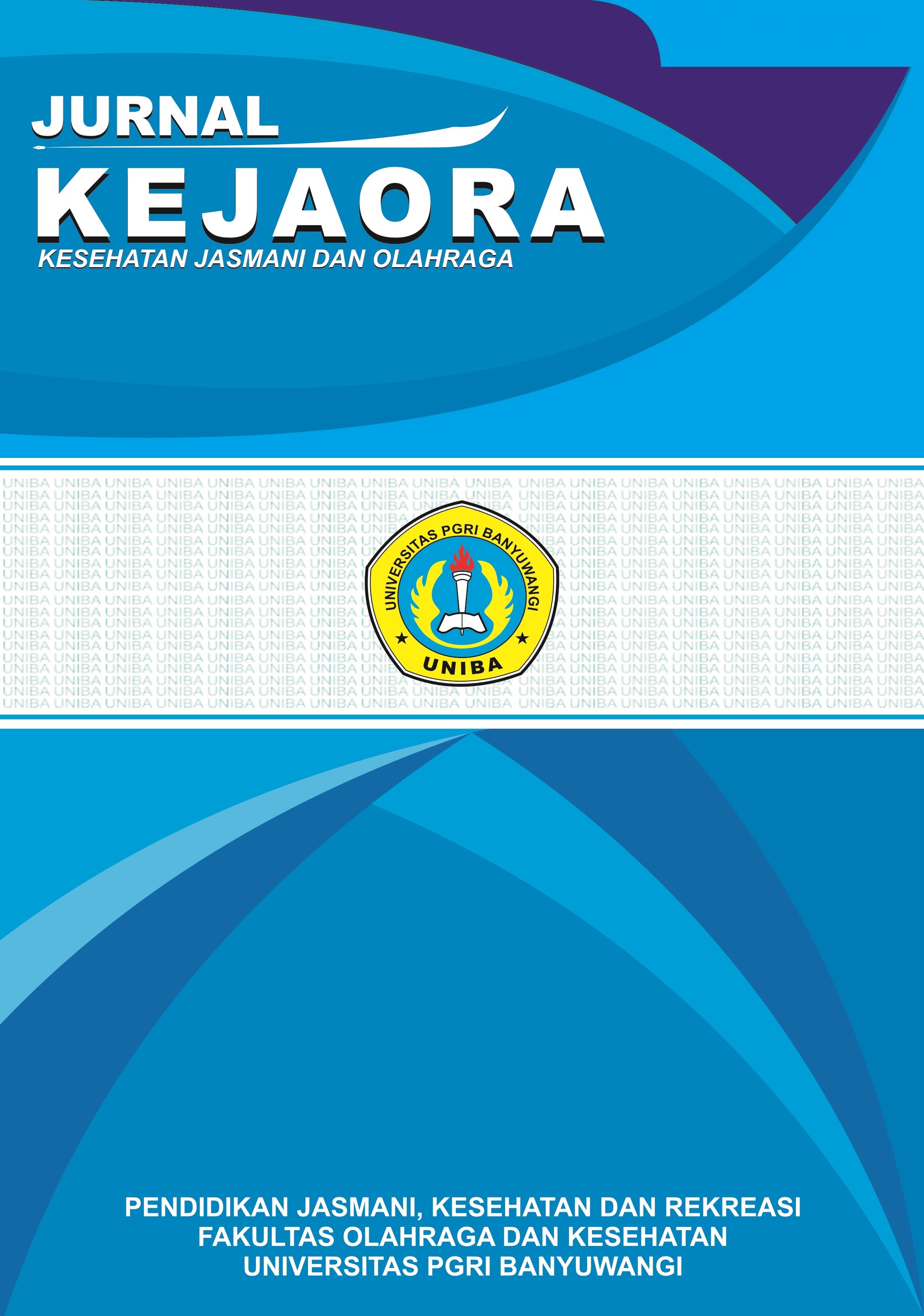Pengembangan Model Pembelajaran Permainan Motorik Halus Untuk Anak Usia Dini
Abstract
Tujuan penelitian ini untuk mengembangkan model pembelajaran permainan motorik halus anak usia dini. Metode Penelitian yang digunakan menggunakan metode penelitian R & D dari Borg & Gall yang sudah dimodifikasi menjadi 7 langkah. Berdasarkan analisis kebutuhan yang dilakukan oleh peneliti yang berupa pengamatan, wawancara dan penyebaran angket, ditemukan beberapa permasalahan yang dihadapi yaitu kurangnya contoh atau model permainan yang menekankan pada aspek motori halus untuk anak dini. hasil penelitian dari analisis kebutuhan, uji coba produk awal, tinjauan ahli, uji coba kelompok kecil, dan uji coba kelompok besar yang dilakukan maka diperoleh data penelitian. Data tersebut dikumpulkan dan diolah sehingga dihasilkan sebuah produk yaitu model pembelajaran motorik halus anak usia dini. Adapun contoh model permainannya antara adalah: 1.Menghitung menggunakan jari, 2.Bermain dengan gelang karet, 3. Tebak bola warna Memakai telunjuk jari, 4. Melempar bola, 5. Bermain dengan kertas, 6. Membedakan besar kecil, 7. Bermain dengan lilin, 8. Membedakan panjang pendek, 9. Membedakan bentuk benda, 10. Pesan berantai, 11. Pengenalan huruf, 12. Mencocokkan gambar dengan angka.13. Permainan Dadu angka. Hasil dari uji kecil dan uji besar adalah model layak dan dapat digunakan dengan baik.
References
Cameron, C. E., Brock, L. L., Murrah, W. M., Bell, L. H., Worzalla, S. L., Grissmer, D., & Morrison, F. J. (2012). Fine Motor Skills and Executive Function Both Contribute to Kindergarten Achievement. Child Development. https://doi.org/10.1111/j.1467-8624.2012.01768.x
Darmawan, Arief & M. Asmawi. (2017). Development Of Basic Movement Model Based On Interactive Multimedia For Elementary Students. Journal of Indonesian Physical Education and Sport. Vol. 3, No.2, 2017, p 95-109: PPs UNJ Publisher
Ghassabian, A., Sundaram, R., Bell, E., Bello, S. C., Kus, C., & Yeung, E. (2016). Gross motor milestones and subsequent development. Pediatrics. https://doi.org/10.1542/peds.2015-4372
Harvey, A. R. (2017). The Gross Motor Function Measure (GMFM). Journal of Physiotherapy. https://doi.org/10.1016/j.jphys.2017.05.007
Kawai, R., Markman, T., Poddar, R., Ko, R., Fantana, A. L., Dhawale, A. K., … Ölveczky, B. P. (2015). Motor Cortex Is Required for Learning but Not for Executing a Motor Skill. Neuron. https://doi.org/10.1016/j.neuron.2015.03.024
Krampe, R. T. (2002). Aging, expertise and fine motor movement. Neuroscience and Biobehavioral Reviews. https://doi.org/10.1016/S0149-7634(02)00064-7
Langendorfer, S. (2016). Test of Gross Motor Development. Adapted Physical Activity Quarterly. https://doi.org/10.1123/apaq.3.2.186
McDowell, B. (2008). The gross motor function classification system - Expanded and revised. Developmental Medicine and Child Neurology. https://doi.org/10.1111/j.1469-8749.2008.03104.x
Piek, J. P., Dawson, L., Smith, L. M., & Gasson, N. (2008). The role of early fine and gross motor development on later motor and cognitive ability. Human Movement Science. https://doi.org/10.1016/j.humov.2007.11.002
Pitcher, T. M., Piek, J. P., & Hay, D. A. (2003). Fine and gross motor ability in males with ADHD. Developmental Medicine and Child Neurology. https://doi.org/10.1017/S0012162203000975
Rusfriyanti, R.D. (2013). pengembangan model pembelajaran gerak dasar lompat bagi siswa kelas II sekolah dasar, Jakarta: PPS UNJ.
Sun, S. H., Sun, H. L., Zhu, Y. C., Huang, L. chi, & Hsieh, Y. L. (2011). Concurrent validity of Preschooler Gross Motor Quality Scale with Test of Gross Motor Development-2. Research in Developmental Disabilities. https://doi.org/10.1016/j.ridd.2011.01.007
Westendorp, M., Houwen, S., Hartman, E., & Visscher, C. (2011). Are gross motor skills and sports participation related in children with intellectual disabilities? Research in Developmental Disabilities. https://doi.org/10.1016/j.ridd.2011.01.009
Wolpert, D. M., Diedrichsen, J., & Flanagan, J. R. (2011). Principles of sensorimotor learning. Nature Reviews Neuroscience. https://doi.org/10.1038/nrn3112
Wolpert, D. M., Ghahramani, Z., & Flanagan, J. R. (2001). Perspectives and problems in motor learning. Trends in Cognitive Sciences. https://doi.org/10.1016/S1364-6613(00)01773-3
Additional Files
Published
How to Cite
Issue
Section
License
Copyright
Authors who publish with Jurnal Kejaora (Kesehatan Jasmani dan Olah Raga) agree to the following terms:
- Authors retain copyright and grant the journal right of first publication with the work simultaneously licensed under a Creative Commons Attribution License (CC BY 4.0) that allows others to share the work with an acknowledgment of the work's authorship and initial publication in this journal.
- Authors are able to enter into separate, additional contractual arrangements for the non-exclusive distribution of the journal's published version of the work (e.g., post it to an institutional repository or publish it in a book), with an acknowledgment of its initial publication in this journal.
- Authors are permitted and encouraged to post their work online (e.g., in institutional repositories or on their website) prior to and during the submission process, as it can lead to productive exchanges, as well as earlier and greater citation of published work.



.png)
.png)







.png)


.png)

